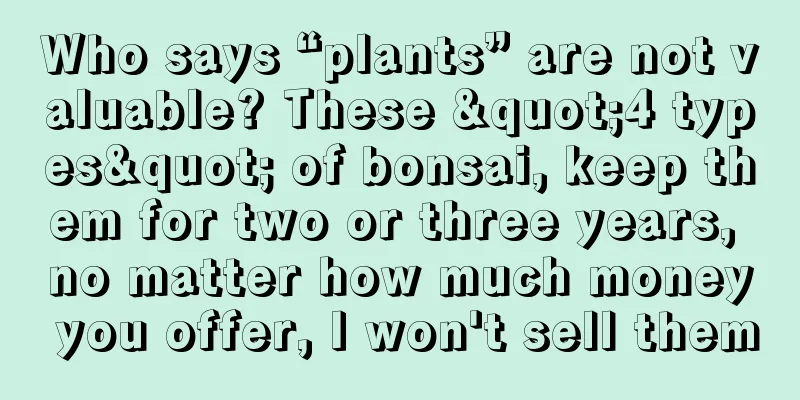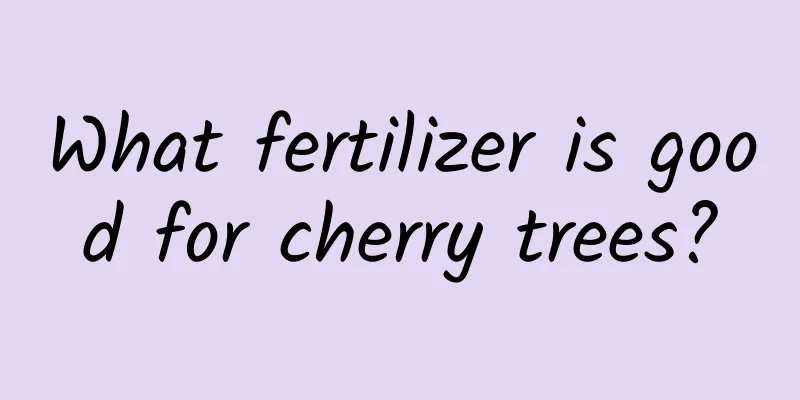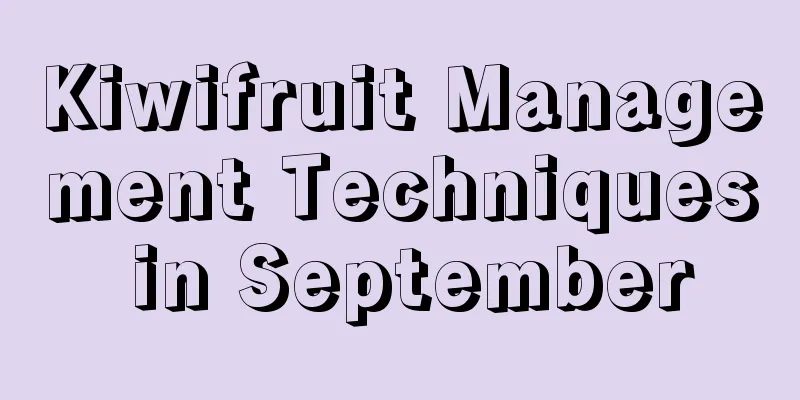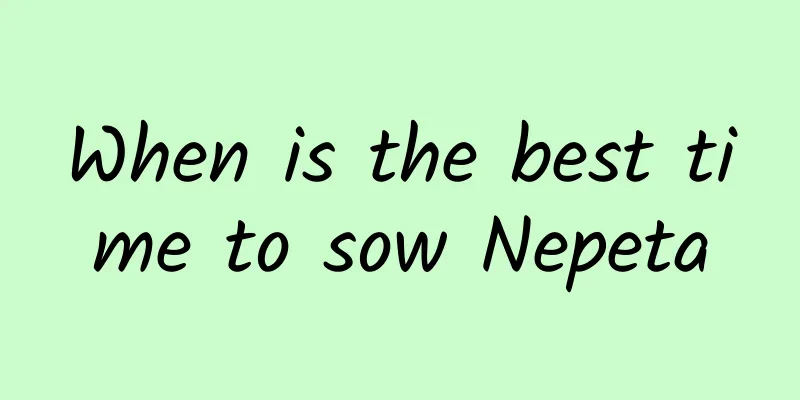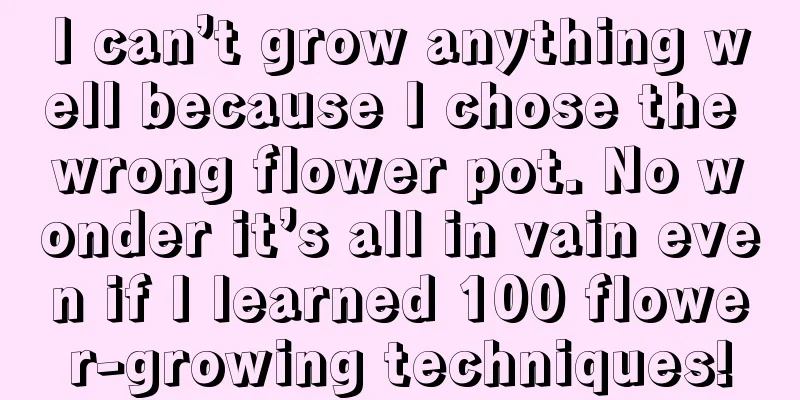How to judge whether gardenia lacks fertilizer or is overgrown (what fertilizer is lacking if gardenia does not bloom)
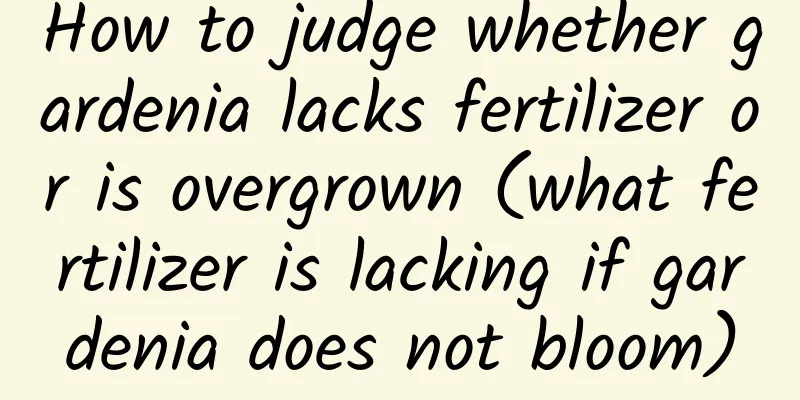
|
It is generally recognized that gardenia is difficult to grow in the north. How do we judge whether gardenia is growing well or not? How do we judge what fertilizer it lacks? How should we supplement it to ensure that it does not have problems? How to know what fertilizer gardenia lacksIn fact, when we grow gardenias, we can judge what fertilizers they lack by looking at their leaves and growth. Type 1: The leaf veins are green, and the rest of the leaf is generally yellowThis situation is caused by a lack of iron. Because gardenia is a southern flower, southern flowers generally prefer acidic soil, and iron can only be absorbed by plants in acidic soil. So when we grow gardenias, if the soil is alkaline, its newly grown leaves will eventually turn yellow. In serious cases, the veins of the entire plant's leaves will be green, while other parts will turn yellow. This is due to a lack of iron . After the problem is discovered, timely solution should be given, and ferrous sulfate should be added in time. Ferrous sulfate should be mixed with water at a concentration of 1:1000 and poured into the potting soil . This will have an improvement effect. Normally, we need to use it once every 1 to 2 months for maintenance, so there will be no problem. Type 2: The veins of the leaves gradually turn yellow, and finally spread to the entire leafThe main problem with gardenia is the lack of nitrogen. Along with this situation, the growth of the entire plant is relatively weak. Therefore, if we grow gardenias, we must add fertilizer in time, because nitrogen fertilizer promotes the growth of branches and leaves. If we want it to grow quickly, balanced nutrient supplementation is essential. If this situation is found, we can find quick-acting nitrogen fertilizer, dilute it with water at a concentration of 1:1000 and spray the entire plant , allowing the leaves to absorb it. This will play a supplementary role and effectively improve the situation. When fertilizing in the later stage, do not use a single fertilizer. Try to use multi-element fertilizers as much as possible. If the nitrogen, phosphorus and potassium are balanced, there will be no lack of nitrogen fertilizer, which will cause yellow leaves. Type 3: Lack of phosphorus fertilizerPhosphorus mainly promotes flowering of plants . If your gardenia does not bloom during the flowering season without being pruned, it is definitely due to a lack of phosphorus. If you use too much nitrogen fertilizer, it will cause it to lack phosphorus. When the flowering season comes, only branches and leaves will grow, but no flowers will bloom. Generally, it starts to grow before the arrival of spring, so we need to supplement it with potassium dihydrogen phosphate. After the phosphorus element is sufficient, it can quickly differentiate flower buds, grow flower buds and bloom directly. 4. Fertilizers for potassium deficiencyThe main function of potassium fertilizer is to make the branches and trunks of plants grow thicker, age faster, and have a developed root system . It plays the role of strengthening the roots. Only when the root system grows well can the plant grow well, absorb nutrients sufficiently, grow well and bloom more. If the plants we grow are weak, they bloom less and their leaves are very small, then they must be lacking in potassium. At this time, try to nourish it as much as possible and let it grow roots, and it will be able to recover completely. The main elements of fertilizers we know are nitrogen, phosphorus and potassium. Nitrogen fertilizer grows branches and leaves, phosphorus fertilizer promotes flowering, and potassium fertilizer makes the plant's root system more developed. Therefore, we usually need to make appropriate judgments to see which fertilizer is lacking, and there will be no problems if we supplement it reasonably. How to fertilize gardeniaWhen we grow gardenias, we must remember to use fertilizer regularly and in a fixed amount , and not use a single fertilizer. For example, long-term use of nitrogen fertilizer will lead to a lack of phosphorus and potassium, and long-term use of phosphorus fertilizer will lead to a lack of other elements, resulting in smaller leaves and even stunted seedlings. When we buy fertilizers, the nitrogen, phosphorus and potassium content are written on the outer packaging. We try to choose fertilizers with high levels of one element and sufficient other elements to promote its growth or flowering. Moreover, during the maintenance process, we need to supplement many trace elements, such as iron, calcium, magnesium, etc. Gardenia has a relatively high demand for iron because it likes acidic soil, so it needs to be supplemented regularly. Other trace elements are generally contained in the potting soil. If you change the pot regularly once or twice a year, there will be no shortage of them. We can also supplement them appropriately. For example, find some bone meal or egg shells and make them into powder. Adding it to the soil can play a certain supplementary role. In this way, when we maintain it, put it in a place with sufficient light, no lack of water, and the temperature is not low, it can grow and bloom normally. |
Recommend
Cultivation methods and precautions of celery peony (how to grow celery peony)
Many friends want to raise it at home because of ...
How to grow the maidenhair fern in winter?
1. Pot soil selection First of all, we have to ch...
What are the cultivation methods and precautions of Tiger Orchid?
Tiger orchid cultivation method When cultivating ...
How to soak dried Hericium erinaceus best? How long does it usually take to soak dried Hericium erinaceus?
1. How to soak hair 1. After buying Hericium erin...
The difference between evergreen dianthus and multicolored dianthus
Different morphological characteristics The first...
What kind of soil is suitable for hyacinth? Can hyacinth be grown at home?
1. What kind of soil is suitable 1. Requirements:...
What is the name of the horse chestnut fruit and what is its function?
1. What is it called? The fruit of the horse ches...
It’s freezing cold in winter. If you don’t pay attention to these 3 points when watering, your plants will have yellow leaves and rotten roots!
The most deadly thing about winter is its tempera...
What does the wild fire glaze tree look like?
1. What wild fire glass tree looks like Wild fire...
The efficacy and function of prunes
effect The fruits of prunes are rich in succinic ...
When to plant eggplant?
Eggplant prefers warm climate and plenty of sunsh...
Cultivation methods and precautions of hydroponic lucky bamboo
1. Vase Insertion A good vase can not only make t...
Does rain affect corn pollination? (Does continuous rainfall during the pollination period affect yield?)
The flowering and pollination period of corn gene...
Bayberry planting conditions and regional climate suitable for growth
Planting conditions for bayberry Bayberry is suit...
Orange Monroe cultivation methods and precautions (how to grow succulent Orange Monroe)
How to maintain Orange Monroe Orange Monroe is ac...
